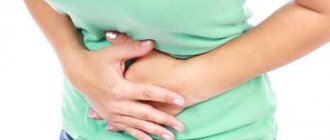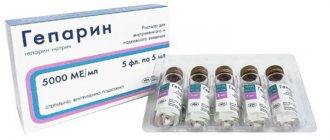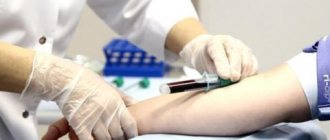author: V. M. Luft, Doctor of Medical Sciences, Professor, Head of the Clinical Nutrition Laboratory of the St. Petersburg Research Institute of Emergency Medicine named after. I. I. Dzhanelidze
In this article we will look at what is recommended by the staff of the clinical nutrition laboratory of the St. Petersburg Research Institute of Emergency Medicine named after. I. I. Dzhanelidze protocol for nutritional support of patients with acute pancreatitis.
Therapeutic nutrition is an integral component of the treatment process, the main task of which is to satisfy the physiological needs of the human body for nutrients and energy, taking into account the mechanisms of disease development, the characteristics of the course of the main and concomitant diseases. Medical nutrition, implemented through the artificial supply of substrate to patients, acquires particular relevance in various emergency conditions, in which nutritional support should be an obligatory component of their basic treatment.
Pharmacological properties of the drug Riboxin
Pharmacodynamics. Riboxin is an anabolic drug that has antihypoxic and antiarrhythmic effects. It is a precursor of ATP, is directly involved in glucose metabolism and promotes metabolism activation under hypoxic conditions and in the absence of ATP. The drug activates the metabolism of pyruvic acid to ensure the normal process of tissue respiration and promotes the activation of xanthine dehydrogenase. Riboxin has a positive effect on metabolism in the myocardium, in particular, it increases the energy balance of cells, stimulates the synthesis of nucleotides, and increases the activity of a number of Krebs cycle enzymes. The drug normalizes the contractile activity of the myocardium and promotes more complete relaxation of the myocardium in diastole due to the ability to bind calcium ions that penetrate into cells during their excitation, and activates tissue regeneration (especially the myocardium and the mucous membrane of the digestive tract). Pharmacokinetics. When administered intravenously, Riboxin is quickly distributed in tissues, metabolized in the liver, where it is completely utilized in the biochemical reactions of the body. It is excreted mainly in urine.
Riboxin during pregnancy
The birth of a new life is an amazing process, accompanied by not the most pleasant conditions, including shortness of breath, nausea and rapid heartbeat. Such symptoms often indicate malfunctions in the female body. In the old days, to get rid of such ailments, the pregnant woman was bled and applied with leeches. Modern medicine has more civilized and effective methods of assistance: a doctor monitoring the course of pregnancy will most likely prescribe pharmaceuticals that normalize the functioning of the organs of the mother and child. Among the most popular is Riboxin during pregnancy. Let's try to understand the advisability of using this medicine by expectant mothers.
What is Riboxin?
Riboxin is a synthetic drug related to anabolic drugs. The nature of anabolic steroids allows us to call these compounds the building blocks of the body, because their active substances are involved in the formation and restoration of tissues and muscles.
Riboxin is very well absorbed by the body, because its active substance inosine, entering the cell, nourishes it, fills it with energy, and forces it to work actively. Thus, at the cellular level, Riboxin stimulates protein synthesis, and therefore metabolic processes. This has a positive effect on all human vital functions, including his resistance to diseases. Is it necessary to say what therapeutic effect the medicine has on those who need to regain strength after a long illness or heavy load?
Riboxin is also indispensable for people suffering from heart disease. The latter is most often caused by a lack of oxygen in cells and tissues. Thanks to its antihypoxic effect, the drug at the cellular level increases the ability to carry oxygen, which means it improves blood circulation and prevents irreversible changes in the cells of the heart muscle, that is, myocardial infarction.
Why can a doctor prescribe Riboxin during pregnancy?
A good metabolism is the key to a healthy pregnancy, so anabolic steroids, and in particular Riboxin, are especially useful for pregnant women. During this period, the load on the body increases greatly: body weight increases, metabolism increases, and therefore changes occur in the functioning of the cardiovascular system. The number of heart beats sometimes reaches eighty per minute at rest at normal body temperature. This is understandable, because the heart needs to work several times more intensely so that there are enough nutrients and energy for two. That's why expectant mothers so often suffer from tachycardia. If at the same time there is also insufficient energy supply to some organs, oxygen starvation may occur; in this case, the doctor again prescribes Riboxin during pregnancy, which helps prevent the risk of developing hypoxia in the fetus.
The drug is also effective in the fight against chronic gastritis. an integral companion of almost every pregnancy. The medicine restores gastric secretion, which in turn reduces the unpleasant symptoms of nausea, normalizes stool and improves the functioning of the entire gastrointestinal tract. Usually, the expectant mother takes Riboxin during pregnancy for 3 - 4 weeks, three tablets a day, but sometimes she resorts to its help during childbirth, when she especially needs protection from stress.
To drink or not to drink – that is the question
Unfortunately, a pregnant woman, confident that any pills and even vitamins have a negative effect on the baby, often prefers to silently endure the ailments that torment her rather than listen to the doctor’s advice. In fact, the mother’s progressive illness is much more dangerous than many medications, in particular Riboxin. To avoid doubts, you need to carefully read the annotation, which contains clear information about the possible risks of using a pharmaceutical product during pregnancy. If we talk about Riboxin, this medicine is absolutely non-toxic. It is for its inherent safety that many people call Riboxin a “heart vitamin.” Perhaps the only side effect that may occur is individual intolerance to the components of the drug, manifested in the form of an allergic rash. In this case, use should be stopped.
But there are much more positive aspects. Riboxin for pregnant women is a good help in the fight against tachycardia. Cardiac activity regulated with the help of this medicine makes it possible to provide the fetus with much-needed nutrients and a sufficient amount of oxygen. By receiving these vital components, the child will be able to grow and develop normally. While a lack of oxygen leads to hypoxia, which has a very bad effect on the development of the fetus, provoking serious irreversible damage to its central nervous system.
So, only the woman herself decides whether she should use Riboxin during pregnancy. When making a choice, you must remember that simply neglecting your condition can cause enormous harm to the child, while timely treatment will ensure a favorable course of pregnancy. But one thing must be said with confidence: the expectant mother does not risk anything by taking a medicine, the effect of which has been experienced by more than one generation.
Author: Svetlana glana, especially for My LYALA
Interesting articles: Smecta during pregnancy is recommended for reading.
Indications for use of the drug Riboxin
Complex treatment of coronary artery disease (condition after myocardial infarction, angina pectoris), heart rhythm disturbances caused by the use of cardiac glycosides, treatment of cardiomyopathies of various origins, myocarditis (due to physical overload), liver diseases (hepatitis, cirrhosis of the liver, fatty liver), urocoproporphyria; prevention of leukopenia during irradiation. As a means of improving visual function, Riboxin is used for open-angle glaucoma with normalized (with the help of antihypertensive drugs) intraocular pressure.
Use of the drug Riboxin
Tablets: orally before meals in a daily dose of 0.6–2.4 g. For the first time, take 0.6–0.8 g/day (0.2 g 3–4 times a day), and if well tolerated, increase the dose for 2–3 days up to 1.2 g/day in 3 divided doses and up to 2.4 g/day. The course of treatment lasts from 4 weeks to 1.5–3 months. For urocoproporphyria, Riboxin is taken in a daily dose of 0.8 g (0.2 g 4 times a day) daily for 1–3 months. Injection. Adults and older children are prescribed intravenous drip or bolus. Initially, 200 mg (10 ml of 2% solution) is administered once a day, then, if well tolerated, up to 400 mg (20 ml of 2% solution) 1–2 times a day. The course of treatment is determined individually (on average 10–15 days). When administered drip into a vein, 2% solution of the drug is diluted in 5% solution of glucose or isotonic solution of sodium chloride (up to 250 ml). The drug is administered slowly, 40–60 drops per minute. In case of acute cardiac arrhythmias, jet administration in a single dose of 200–400 mg (10–20 ml of 2% solution) is possible.
Let's start with a definition. Acute pancreatitis (AP)
Acute pancreatitis (AP) is an acute autolytic lesion of the pancreas, manifested by the development of edema of the organ (edematous interstitial pancreatitis) or primary aseptic pancreatic necrosis (destructive or necrotizing pancreatitis) with the subsequent development of both local and systemic inflammatory reactions, as well as various involvement of other regional tissues or distant body systems with a high risk of secondary purulent infection.
Currently, acute pancreatitis represents a very significant social problem. For example, according to data from hospitals in St. Petersburg, OP ranks first in the overall structure of patients with acute surgical diseases of the abdominal organs, reaching 42% of all hospitalized patients. In the general structure of surgical patients admitted to the Research Institute of Emergency Medicine named after. I. I. Dzhanelidze in the period from 2002 to 2006, OP also ranks first and has a steady upward trend. The medical and social significance of AP is determined by the relatively frequent (15–20%) severe course of the disease with the development of life-threatening complications, the need for long-term inpatient expensive treatment of patients, long-term disability, frequent chronicity of the process (up to 60–65%), early disability, as well as the high mortality rate of patients with severe disease (25–30%).
The basis of the clinical and morphological classification of acute pancreatitis is the form of the disease, intra-abdominal and systemic complications, taking into account the prevalence of necrotic lesions of the pancreas and various parts of the retroperitoneal tissue, the phase development of the inflammatory-necrotic process from abacterial to infected.
Forms of the disease
- Edematous (interstitial) pancreatitis.
- Sterile pancreatic necrosis:
- according to the extent of the lesion: limited and widespread;
- by the nature of the lesion: fatty, hemorrhagic, mixed.
- Infected pancreatic necrosis.
Local complications
In the pre-infectious phase:
- Parapancreatic infiltrate (omentobursitis, volumetric fluid formations of retroperitoneal localization).
- Necrotic (aseptic) phlegmon of retroperitoneal tissue (parapancreatic, paracolal, perinephric, pelvic, etc.).
- Peritonitis: enzymatic (abacterial).
- Pseudocyst (sterile).
- Arrosive bleeding (intra-abdominal and in the gastrointestinal tract).
During the infection phase:
- Septic phlegmon of the retroperitoneal tissue: parapancreatic, paracolar, paranephric, pelvic.
- Pancreatogenic abscess (retroperitoneal fatty spaces or abdominal cavity).
- Fibrinous-purulent peritonitis (local, widespread).
- Infected pseudocyst.
- Internal and external pancreatic, gastric and intestinal fistulas.
- Arrosive bleeding (intra-abdominal and in the gastrointestinal tract).
Systemic complications
- Pancreatogenic shock in sterile pancreatic necrosis and its intra-abdominal complications.
- Septic (infectious-toxic) shock in infected pancreatic necrosis and its intra-abdominal complications.
- Multiple organ failure in both sterile and infected pancreatic necrosis and their complications.
As is known, in acute pancreatitis there are certain sequentially developing phases:
Phase I is enzymatic (the first 3–7 days of the disease), which is characterized by the development of acute interstitial inflammation of the pancreas or the formation of pancreatic necrosis of varying severity and prevalence, enzymatic endotoxicosis, and in some patients, multiple organ failure. Based on the severity of clinical and laboratory disorders arising from acute pancreatitis, three clinical variants of its course are distinguished: mild, moderate and severe.
Mild acute pancreatitis is characterized by minimal manifestations of organ dysfunction, the absence of endogenous intoxication, and a rapid positive effect during conservative therapy. The morphological substrate of this clinical form is interstitial (edematous) pancreatitis.
Want more new information on nutrition issues? Subscribe to the informational and practical magazine “Practical Dietetics”!
SUBSCRIBE
Severe acute pancreatitis is manifested by severe endogenous intoxication, exicosis, multiple organ disorders, sometimes pancreatogenic shock, systemic inflammatory response syndrome, respiratory, renal, intestinal failure, the development of coagulopathy and metabolic dysfunction, lack of improvement or a tendency to worsen the patient's condition against the background of complex conservative therapy. The morphological substrate of this clinical form is widespread (large focal or total-subtotal) sterile or infected necrotizing pancreatitis and its complications.
Acute pancreatitis of moderate severity occupies an intermediate position between the forms described above and is characterized by a mildly expressed systemic inflammatory reaction syndrome, respiratory, renal or intestinal failure, moderate endotoxicosis, improvement of the patient's condition against the background of complex conservative therapy with preservation of local symptoms of the disease in the first two days. The morphological substrate of this clinical form is small-focal, moderately widespread necrotizing pancreatitis.
Phase II is reactive (2nd week of the disease), characterized by the body’s reaction to the formed foci of necrosis (both in the pancreas and in the parapancreatic tissue).
Phase III - melting and sequestration (starts from the 3rd week of the disease, can last several months). Sequesters in the pancreas and retroperitoneal tissue begin to form from the 14th day from the onset of the disease. There are two possible options for the course of this phase:
- aseptic melting and sequestration (sterile necrotizing pancreatitis) with the formation of postnecrotic cysts, sometimes fistulas;
- septic melting and sequestration (infected necrotizing pancreatitis) with further development of local and systemic (often sepsis) complications.
The tactics of nutritional support for patients with acute pancreatitis is determined by the type of pathomorphological changes in the pancreas (edematous, necrotizing), the stage of the disease, the severity of pathophysiological disorders and the characteristics of the clinical course of acute pancreatitis, as well as options for their surgical treatment.
The protocol for nutritional support of patients with acute pancreatitis is presented by V. M. Luft, MD, Professor, Head of the Clinical Nutrition Laboratory of the St. Petersburg Research Institute of Emergency Medicine named after. I. I. Dzhanelidze, and researcher at the specified laboratory, Ph.D. A. V. Lapitsky.
NB One of the most important points in intensive therapy of acute pancreatitis in the enzymatic phase of the disease is the creation of functional rest and suppression of exocrine activity of the pancreas. This involves temporarily prohibiting oral intake of fluids and food until signs of systemic “evasion” of pancreatic enzymes are completely eliminated. In this case, normovolemic correction of water-electrolyte balance during this period is carried out parenterally.
It has now been shown that in mild cases of acute pancreatitis (edematous form) and signs of gland destruction according to computed tomography data, fasting prescribed for the first 2–3 days does not affect the course and outcome of the disease and this category of patients does not require active nutritional support.
In cases of acute pancreatitis of moderate severity, and especially severe disease, which occurs with pronounced phenomena of hypermetabolism-hypercatabolism, rapidly progressing protein-energy deficiency, increasing immunosuppression with the addition of various infectious complications, nutritional support, which should begin in the first 24–48 hours, is a mandatory priority component of intensive treatment for this category of patients.
NB Severe acute destructive pancreatitis in more than 90% of patients occurs with symptoms of early developing acute intestinal failure and refers to diseases in which the most important role of opportunistic flora of the gastrointestinal tract has been proven as an additional source of endogenous infection of patients.
With the development of acute intestinal failure, conditions are created for ascending colonization of the proximal parts of the small intestine by opportunistic flora and subsequent uncontrolled translocation of microbes and their toxins into the blood, which is the main source of endogenous (enterogenous) infection of foci of pancreatic necrosis.
Acute intestinal failure syndrome is the “motor” and the main factor in the pathogenesis of multiple organ failure that often occurs in these patients. Quick and effective relief of symptoms of multiple organ failure without resolving acute intestinal failure is impossible.







